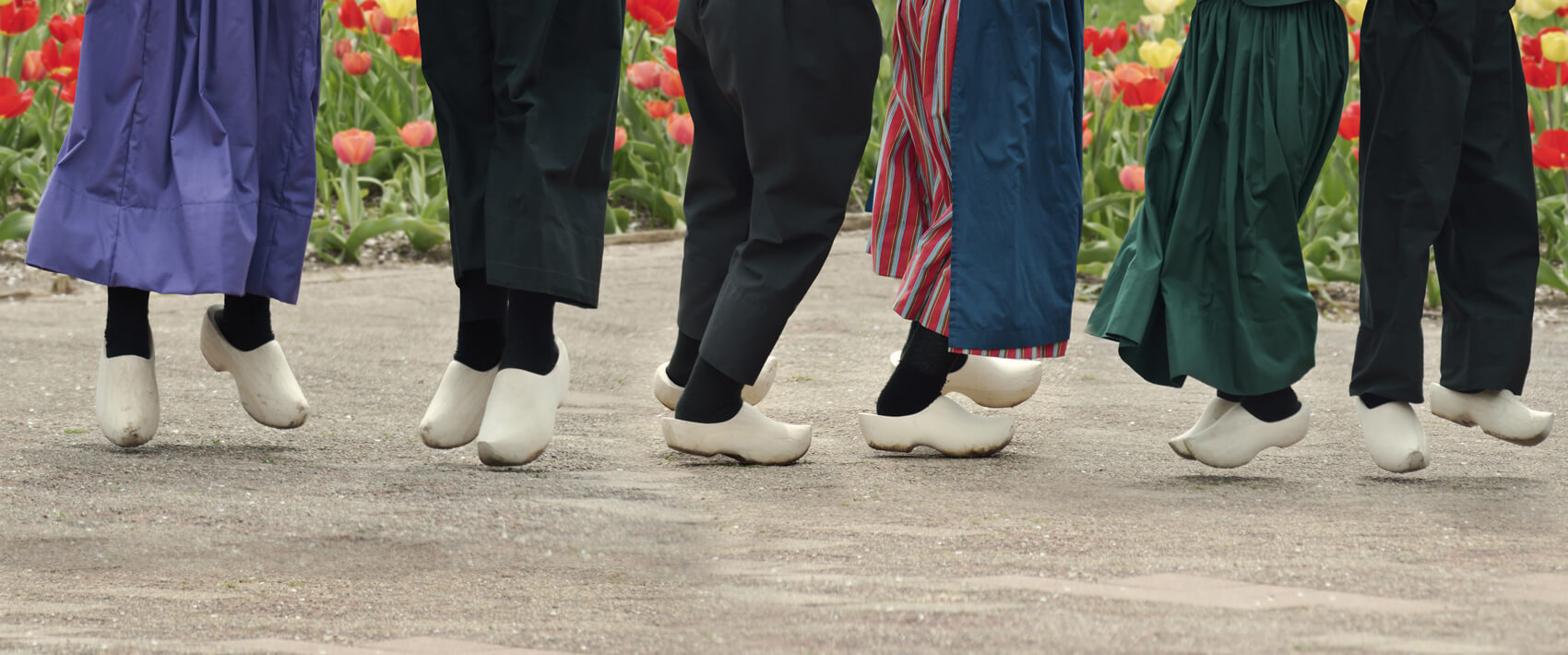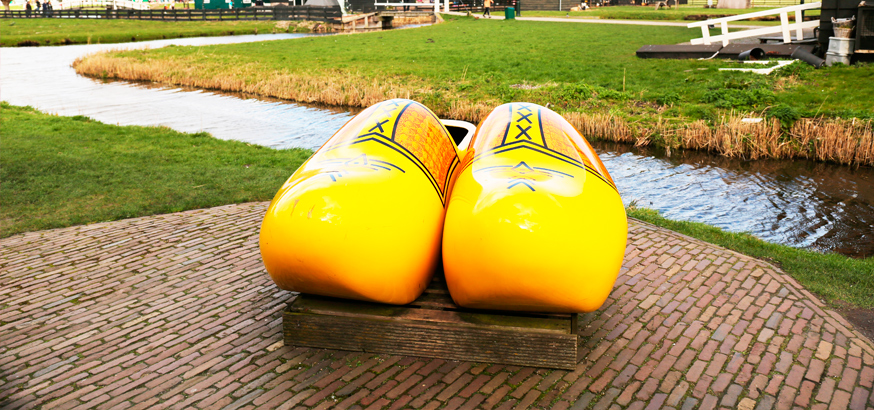The Dutch have worn wooden shoes - or klompen as they’re known in the Netherlands -since the 13th century. Just don’t come to Holland expecting to see locals going about their day wearing the traditional Dutch clogs. While they’re a common footwear choice for farmers, the closest a modern-day city dweller will come to wooden shoes is in a souvenir shop. Read on to learn the history and function of these traditional Dutch shoes - and find out where you can witness clog making.
Easy traveling across The Netherlands
Click here to buy a Holland Travel Ticket.
Dutch wooden shoes, a history
Just like windmills and tulips, wooden shoes are a commonly recognized symbol of the Netherlands. In fact, wooden shoes have been worn throughout the ages all over Europe. It’s in Holland, however, that the humble clog has found its fame. It wasn’t until the 16th century that wooden shoes gained momentum as a form of footwear in the Netherlands. Crafted from a single piece of wood, they were practical and affordable. Naturally water resistant, they protected feet from the wet Dutch climate, and enabled their wearer to move across sodden ground with ease. Clogs continued to be worn by agricultural workers well into the 20th century, as their sturdiness guarded against injury. To this day, wooden shoes are still a common choice for farmers and gardeners in rural parts of Holland.
The art of clog making
Like most things, the way Dutch wooden shoes are made has adapted over time. Originally crafted entirely by hand, machines have gradually replaced many of the skilled clog-making artisans. Today in the Netherlands, you’ll still find a few traditional clog makers. One such business is the Kooijman Wooden Shoe Workshop in the historical Dutch town of Zaanse Schans, a short train ride from Amsterdam. It was here that Jaap and Ineke Kooijman decided to preserve the Dutch craft of wooden clog making. Since 1974, the Kooijman Workshop has been demonstrating the traditional process of clog making on restored antique machines, for over a million visitors every year. After your tour of the Kooijman Workshop, you can continue your Dutch-shoes education with a wander through the clog museum. And if you book a day trip to Zaanse Schans, you can also get acquainted with yet another Dutch tradition: windmills.





